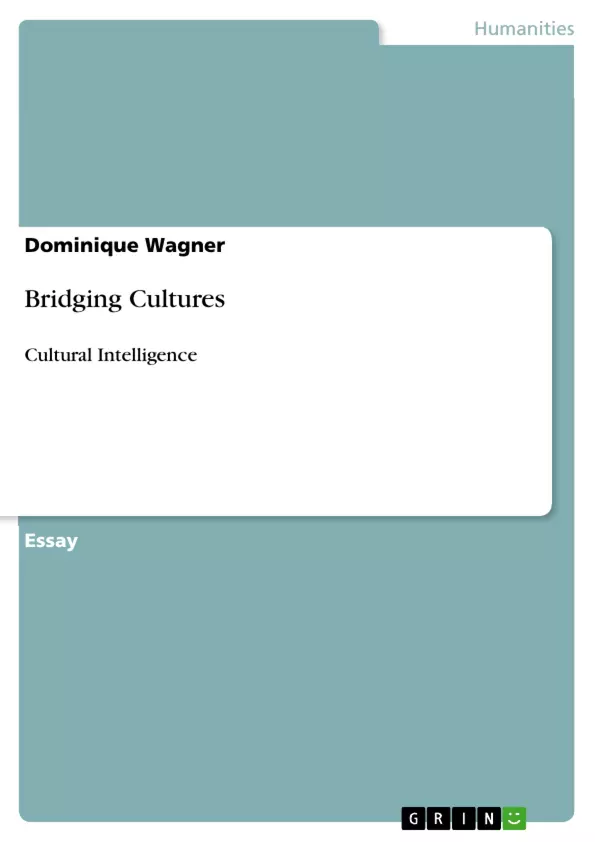The aim of this essay is to discuss different theories of cultural intelligence (CI). It will first explain how the concept of CI evolved, then define cultural intelligence by discussing different definitions and theories of CI. Differences between emotional and cultural intelligence will be outlined and why CI may be relevant to global transition and interactions between people from different cultural backgrounds will be explained. Finally, the correlation between CI and personality traits will be discussed and the potential relevance of this for the development of cultural intelligence will be argued.
Inhaltsverzeichnis (Table of Contents)
- Introduction
- Cultural Intelligence (CI)
- Definition and Theories of CI
- Bennett's Development Model of Intercultural Sensitivity
- Peterson's Definition of CI
- Earley and Mosakowski's Three Components of CI
- Thomas and Inkson's Three Components of CI
- Livermore's Four Components of CQ
- Ang and Van Dyne's Combined Model of CQ
- Emotional Intelligence and Cultural Intelligence
- Relevance of Cultural Intelligence
- Developing Cultural Intelligence
Zielsetzung und Themenschwerpunkte (Objectives and Key Themes)
This essay explores the concept of cultural intelligence (CI), examining various theories and definitions. It aims to clarify the relationship between CI and emotional intelligence, and to explain the relevance of CI in today's globalized world. The essay also investigates the potential link between personality traits and the development of CI.- Evolution and definition of cultural intelligence (CI)
- Relationship between emotional intelligence (EI) and CI
- Relevance of CI in global contexts
- Influence of personality traits on CI development
Zusammenfassung der Kapitel (Chapter Summaries)
The essay begins by tracing the development of CI, starting with the broader concepts of social intelligence (SI) and emotional intelligence (EI). It then examines different theories of CI, focusing on Bennett's Development Model of Intercultural Sensitivity, Peterson's definition based on Gardner's multiple intelligences, and the three-component models proposed by Earley and Mosakowski and Thomas and Inkson. The essay then discusses Livermore's four-component model of CQ and Ang and Van Dyne's combined model, which integrates elements from previous theories. It examines the relationship between emotional intelligence and cultural intelligence, highlighting the key aspects of emotional intelligence that are relevant to CI. The essay concludes by discussing the relevance of CI in today's globalized world and the potential for developing cultural intelligence. It explores the issue of whether personality traits influence the development of CI, citing research that suggests openness to experience is a significant predictor of high cultural intelligence.Schlüsselwörter (Keywords)
This essay explores the key concepts of cultural intelligence (CI), emotional intelligence (EI), intercultural sensitivity, intercultural competence, globalization, and personality traits, particularly the role of openness to experience in the development of CI. It examines diverse theories and perspectives on CI, including those of Bennett, Peterson, Earley and Mosakowski, Thomas and Inkson, Livermore, and Ang and Van Dyne.
Fin de l'extrait de 8 pages
- haut de page
- Citation du texte
- Dominique Wagner (Auteur), 2011, Bridging Cultures, Munich, GRIN Verlag, https://www.grin.com/document/192226
Lire l'ebook



